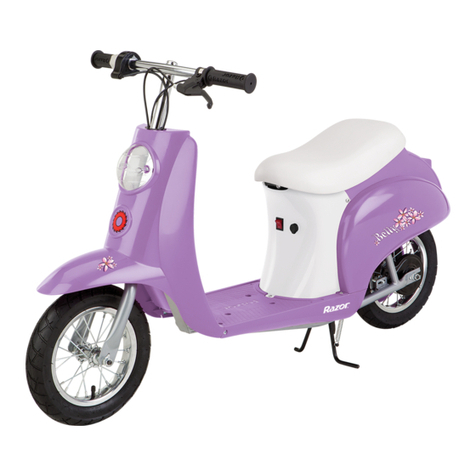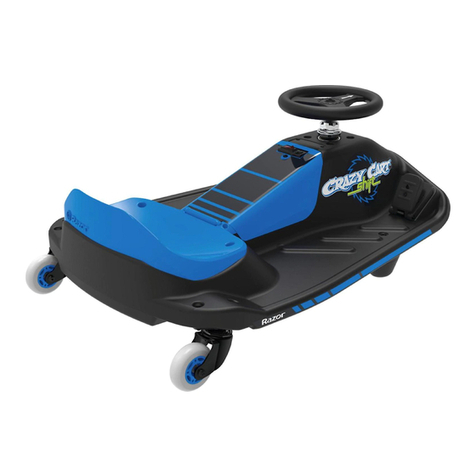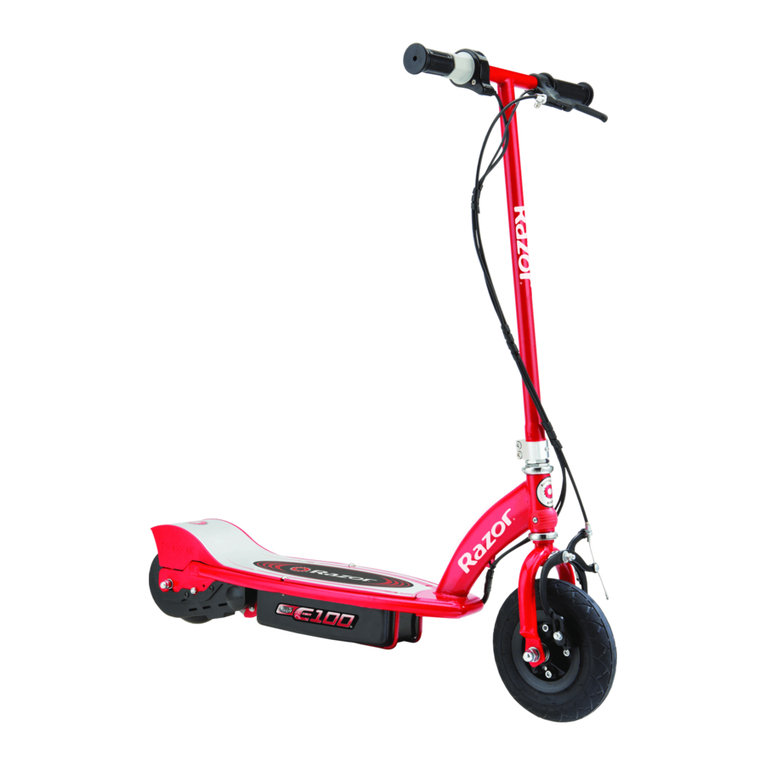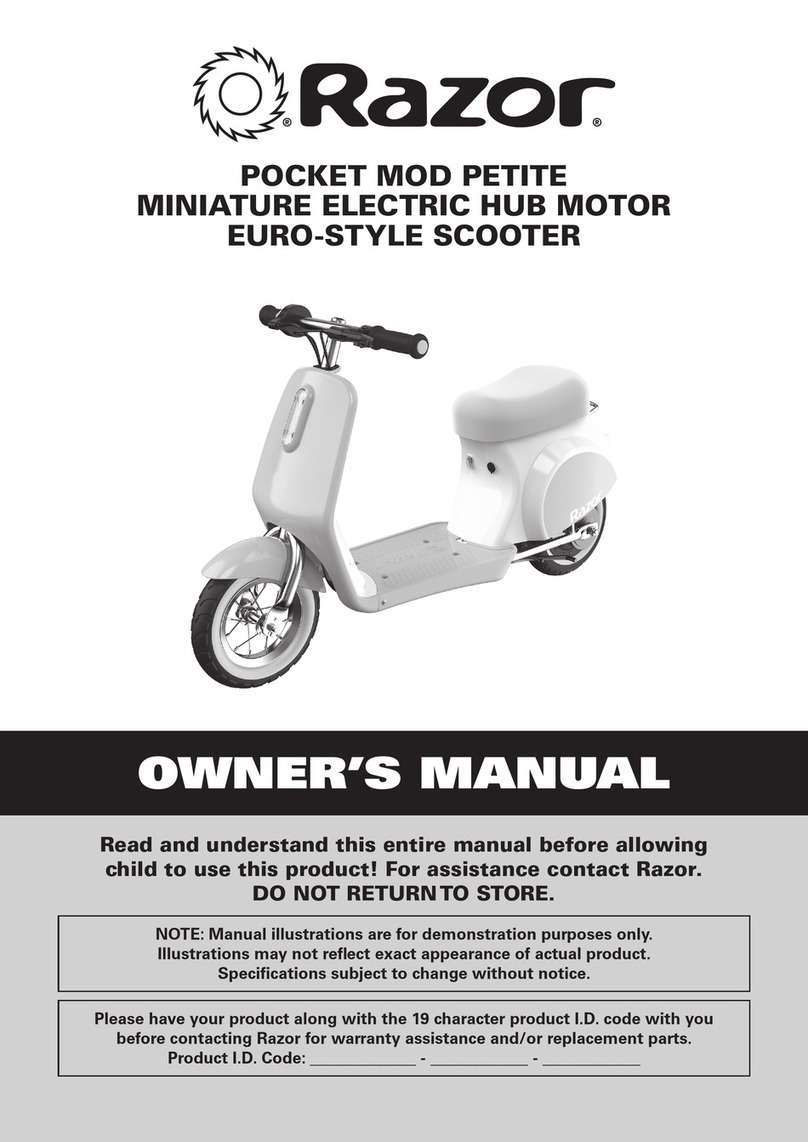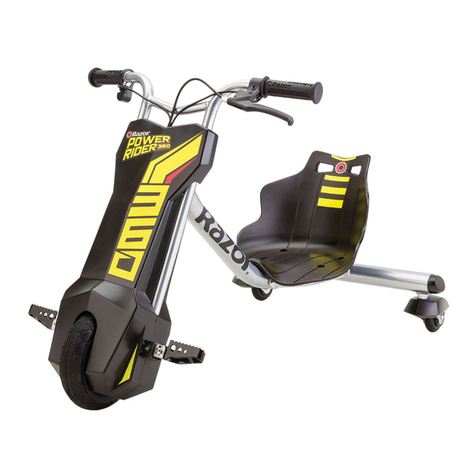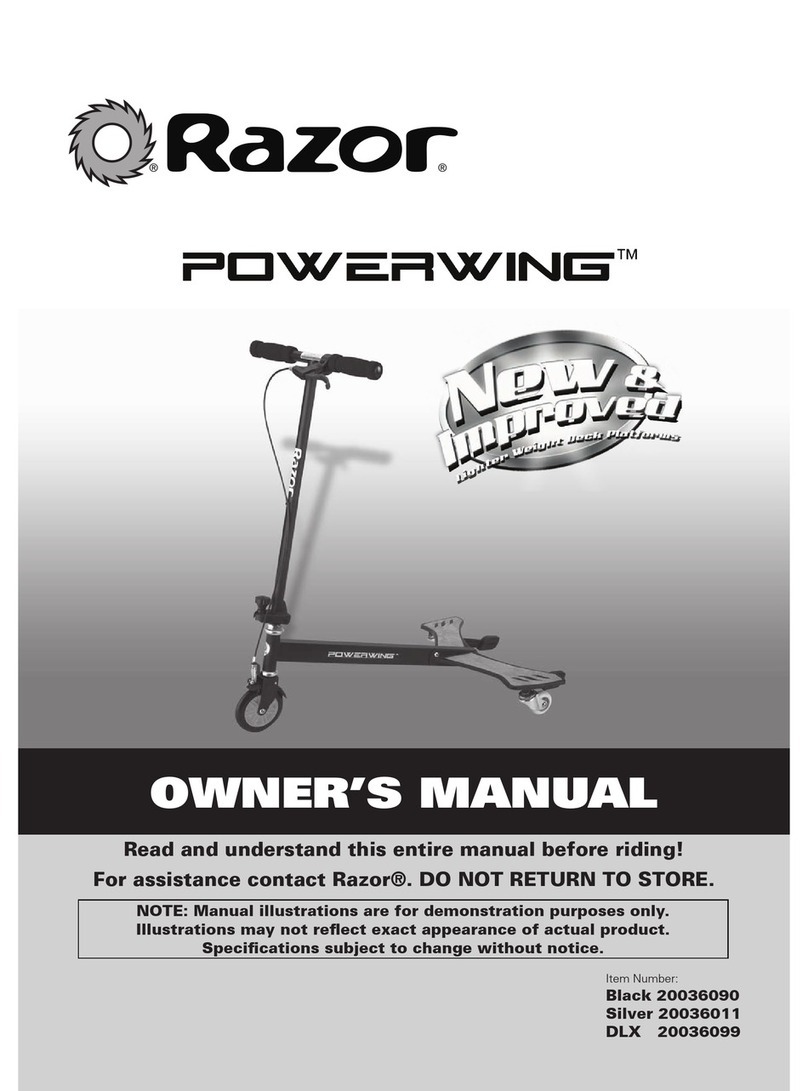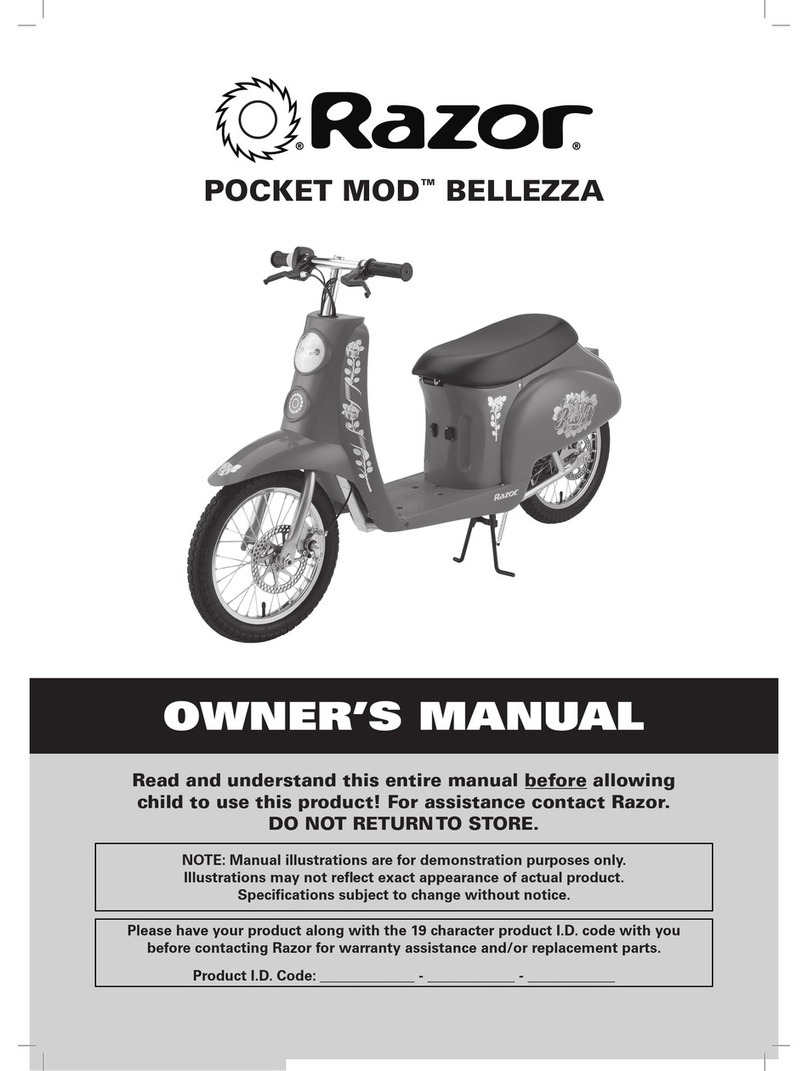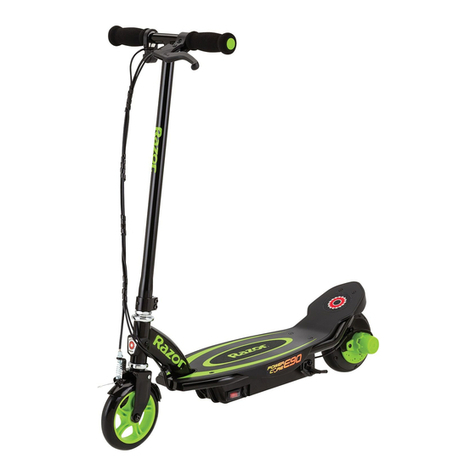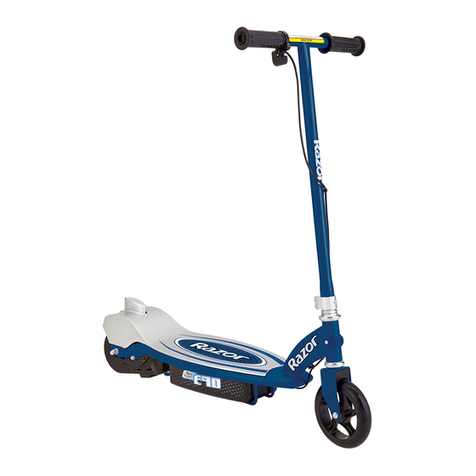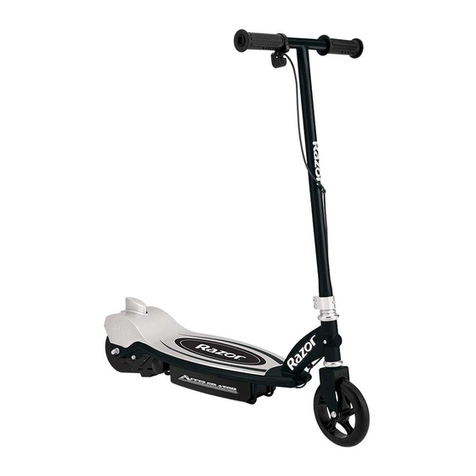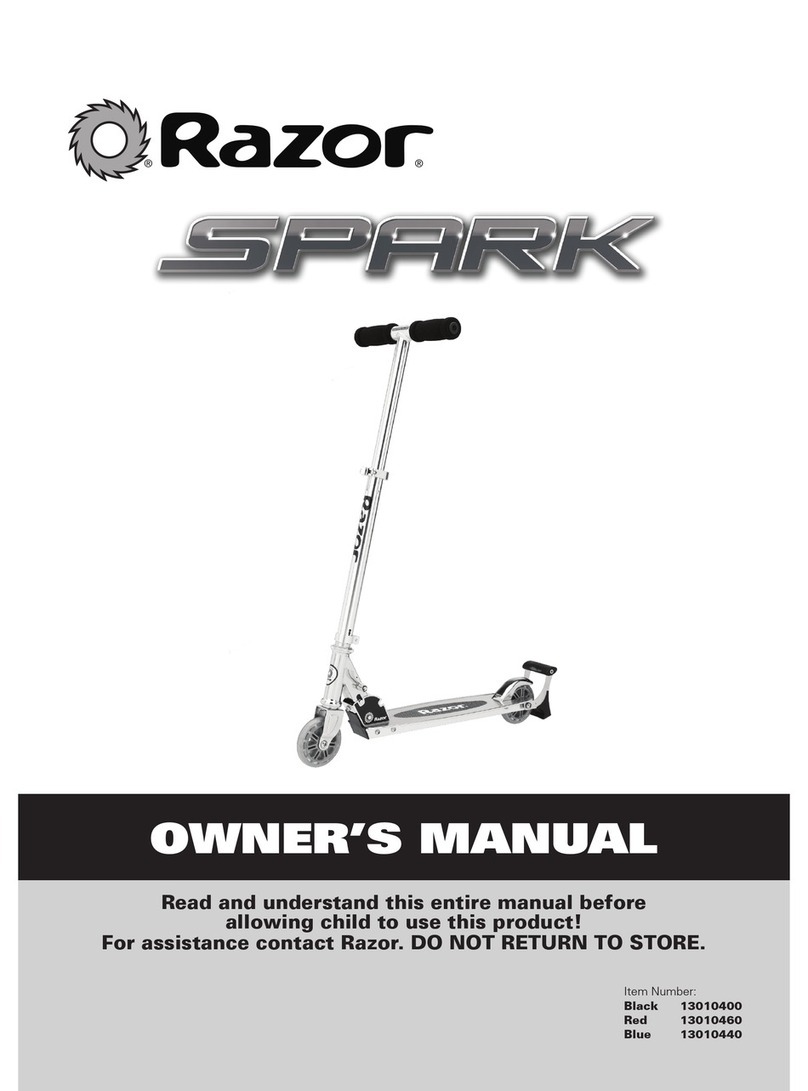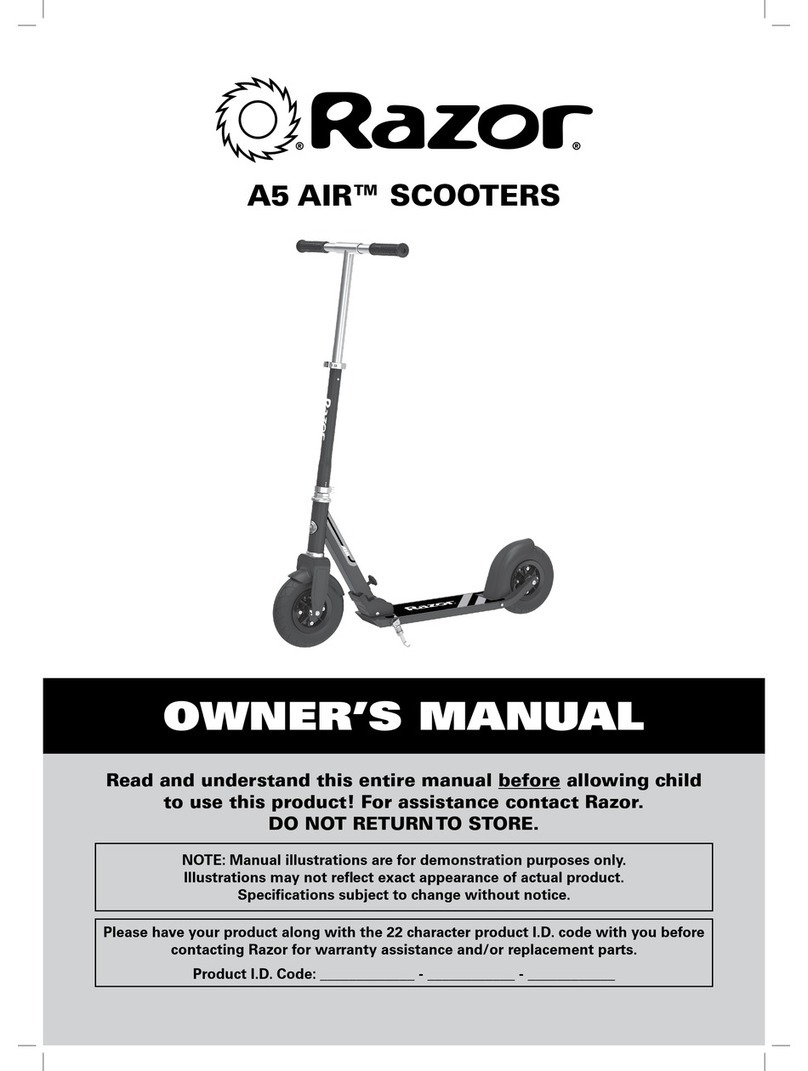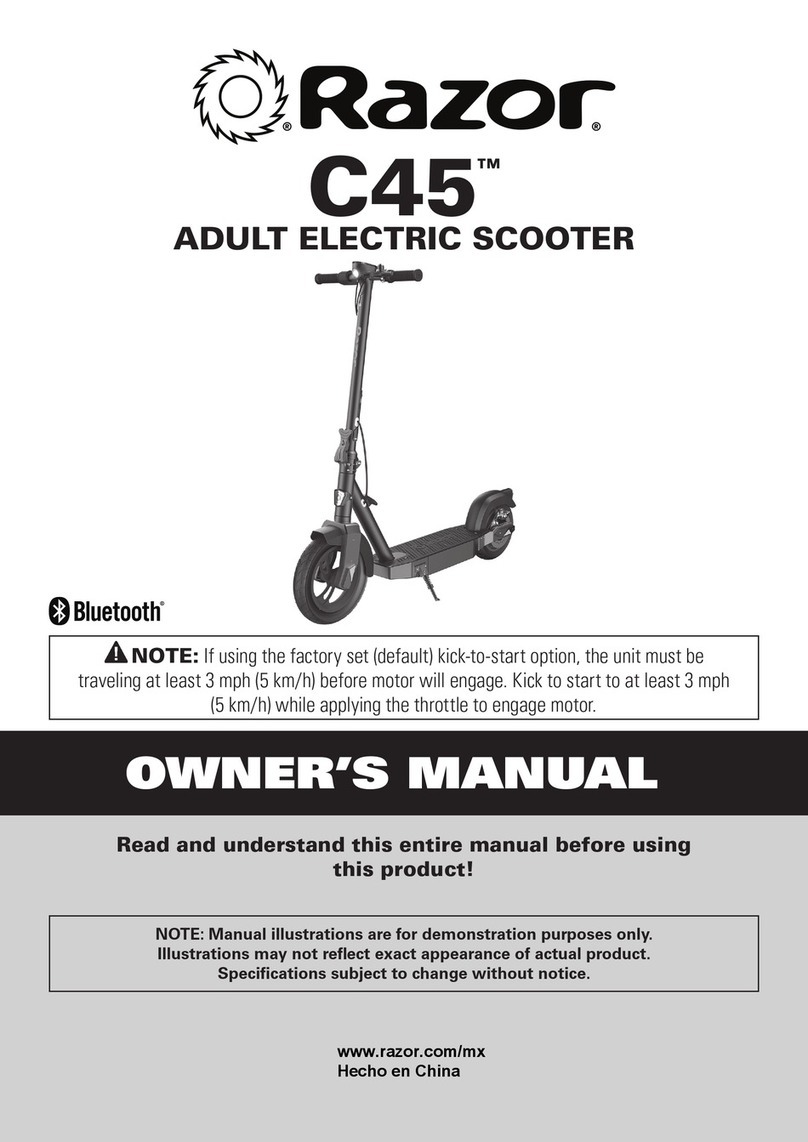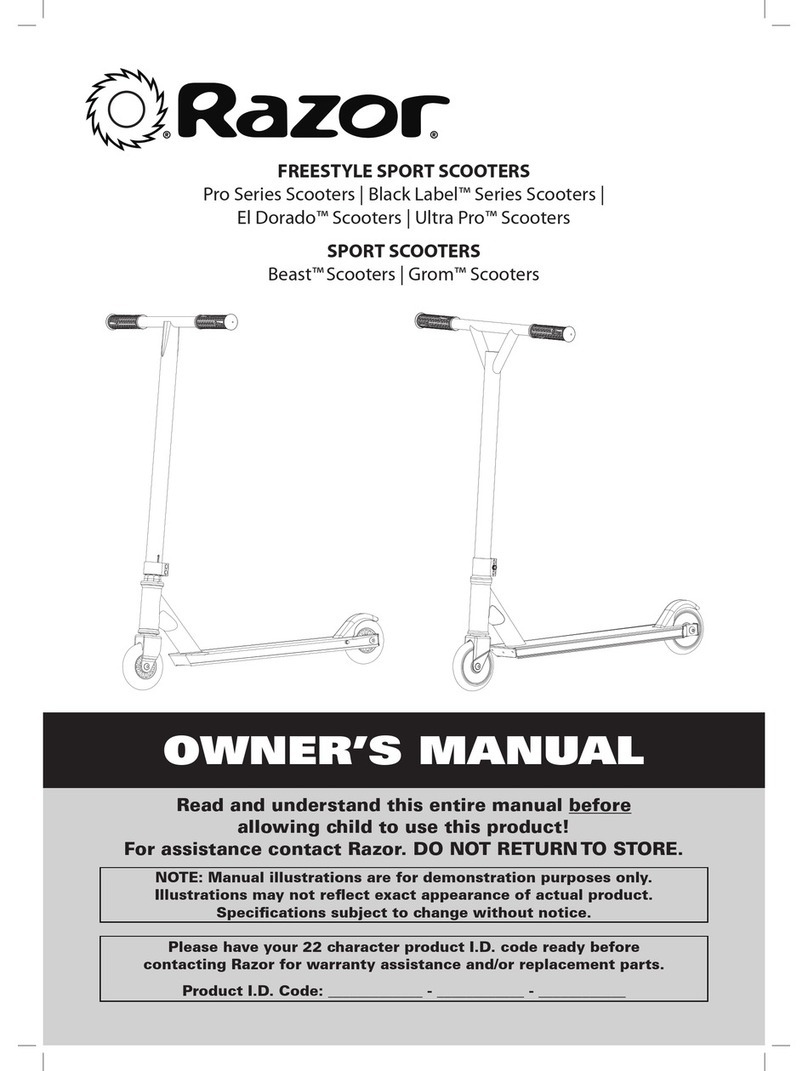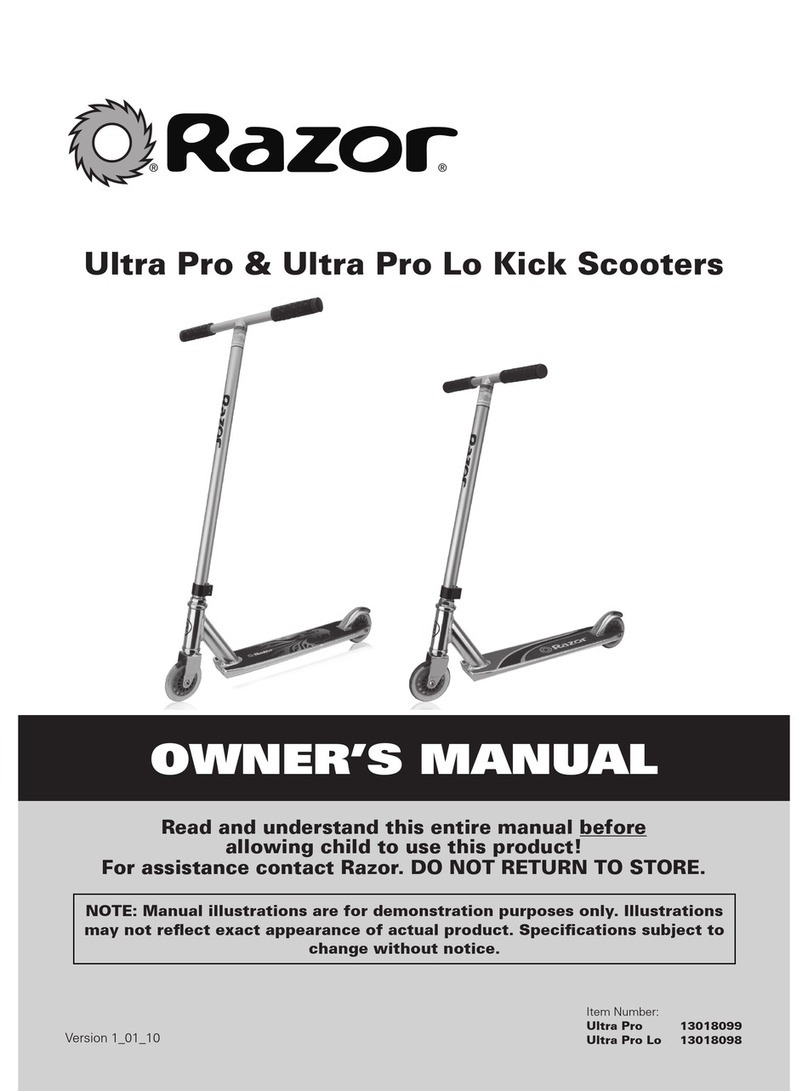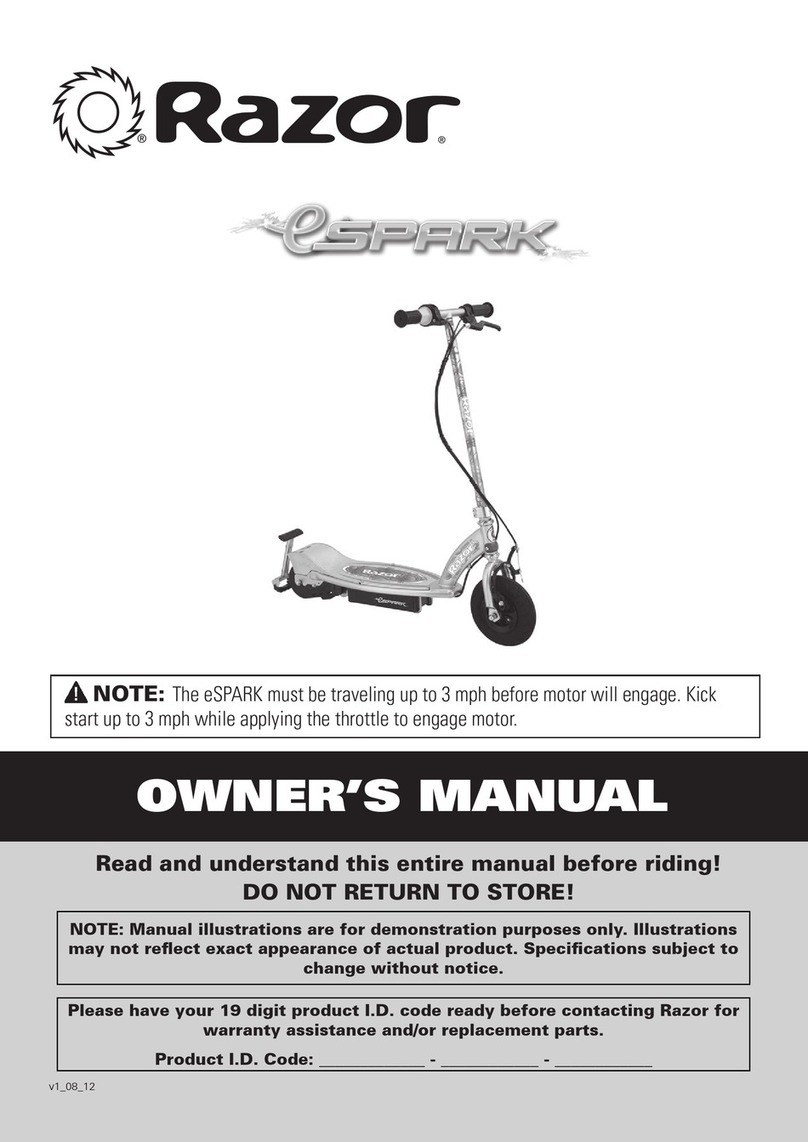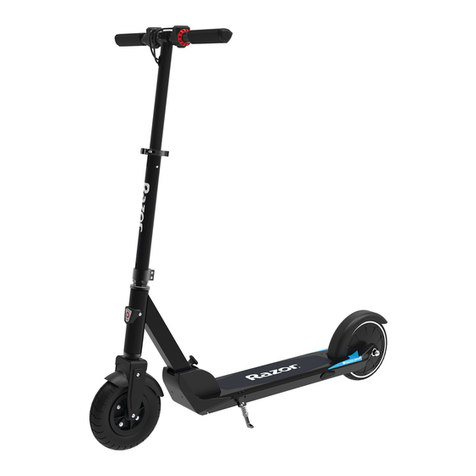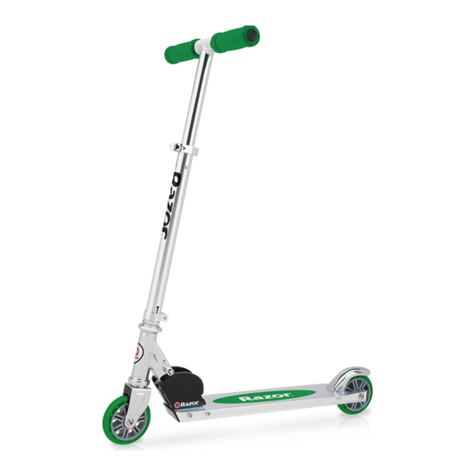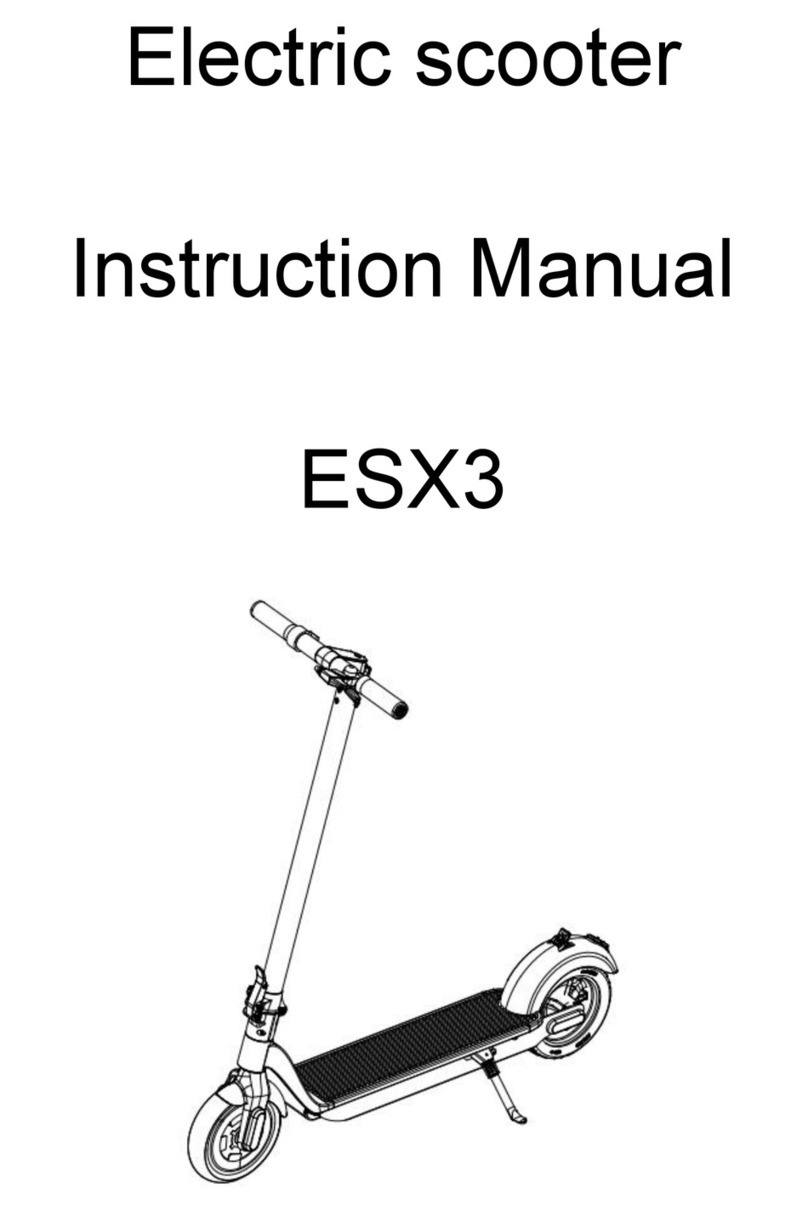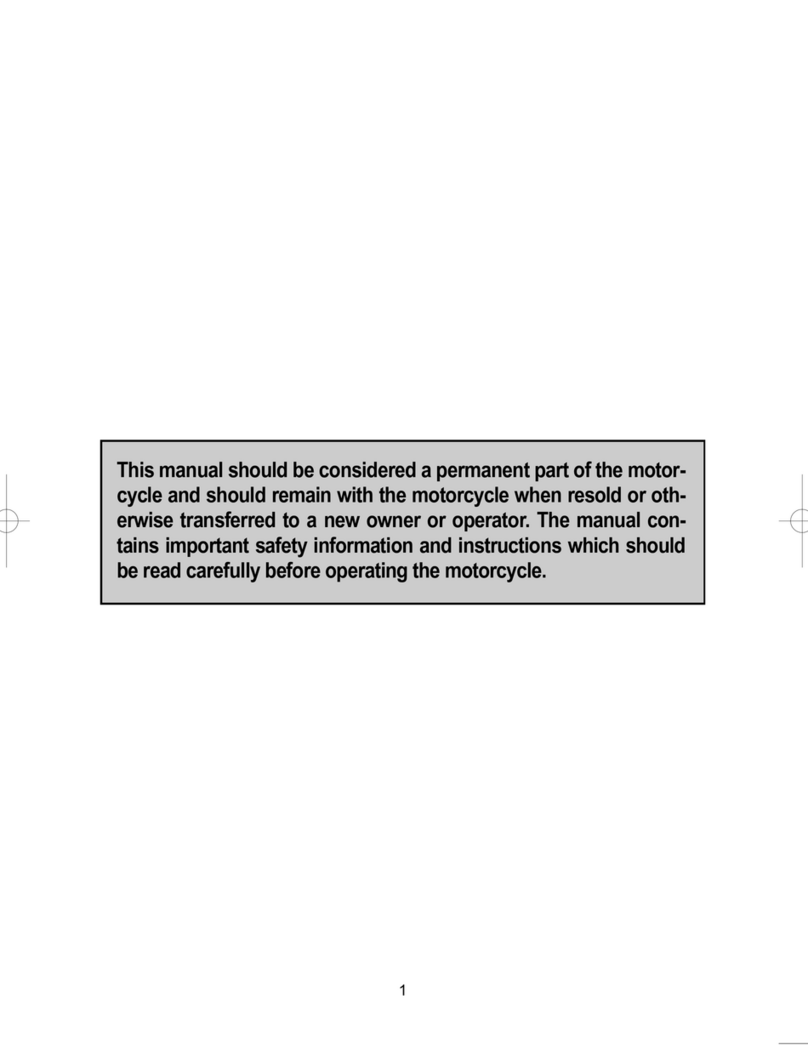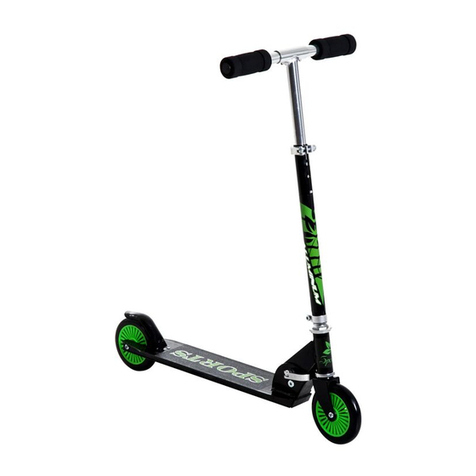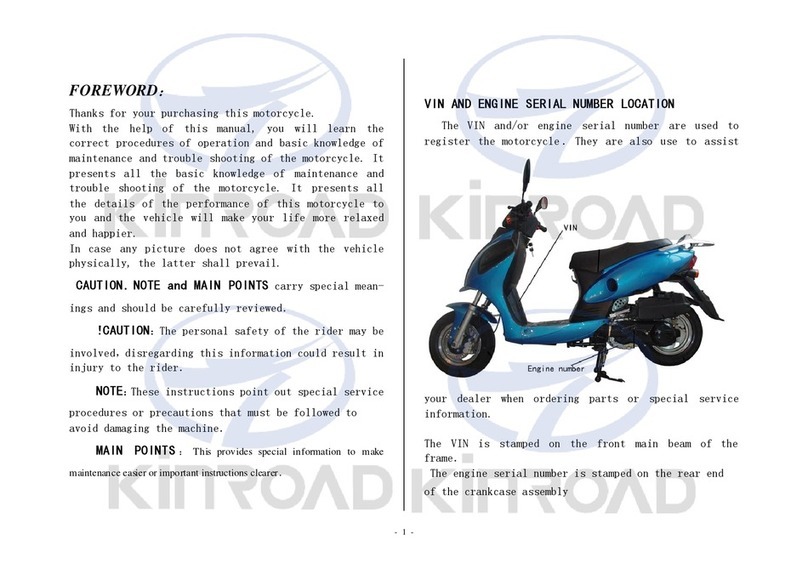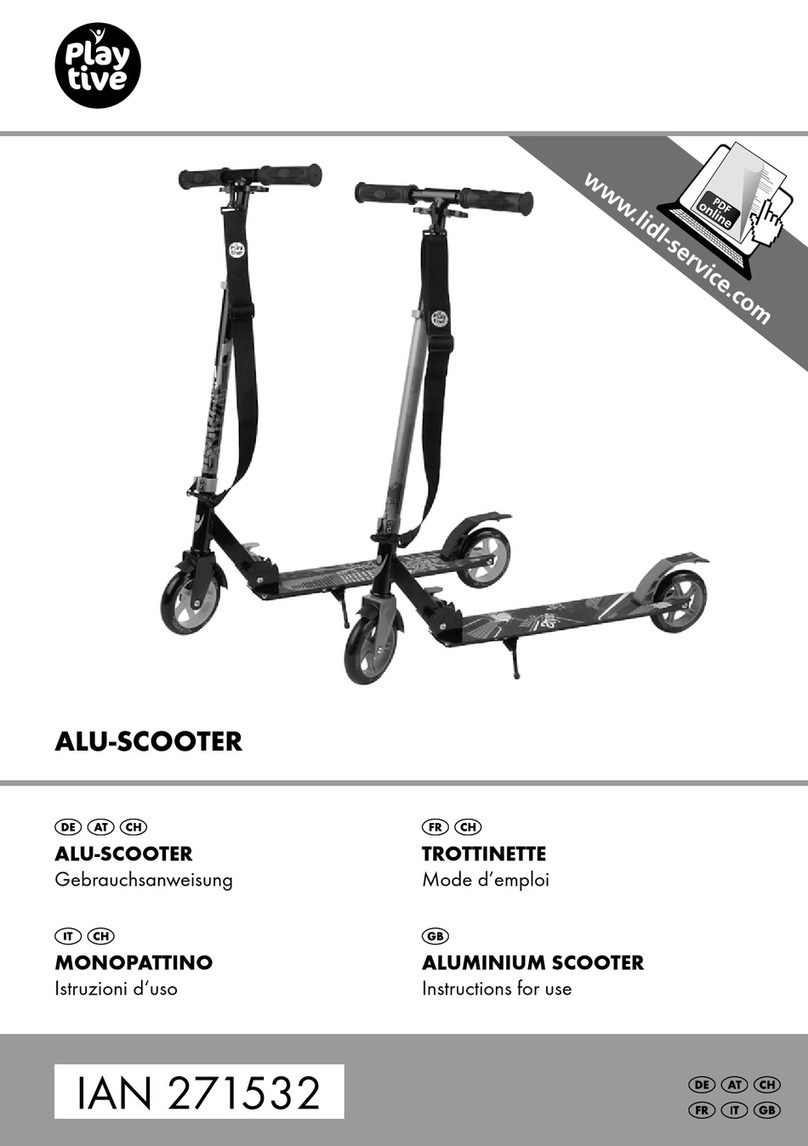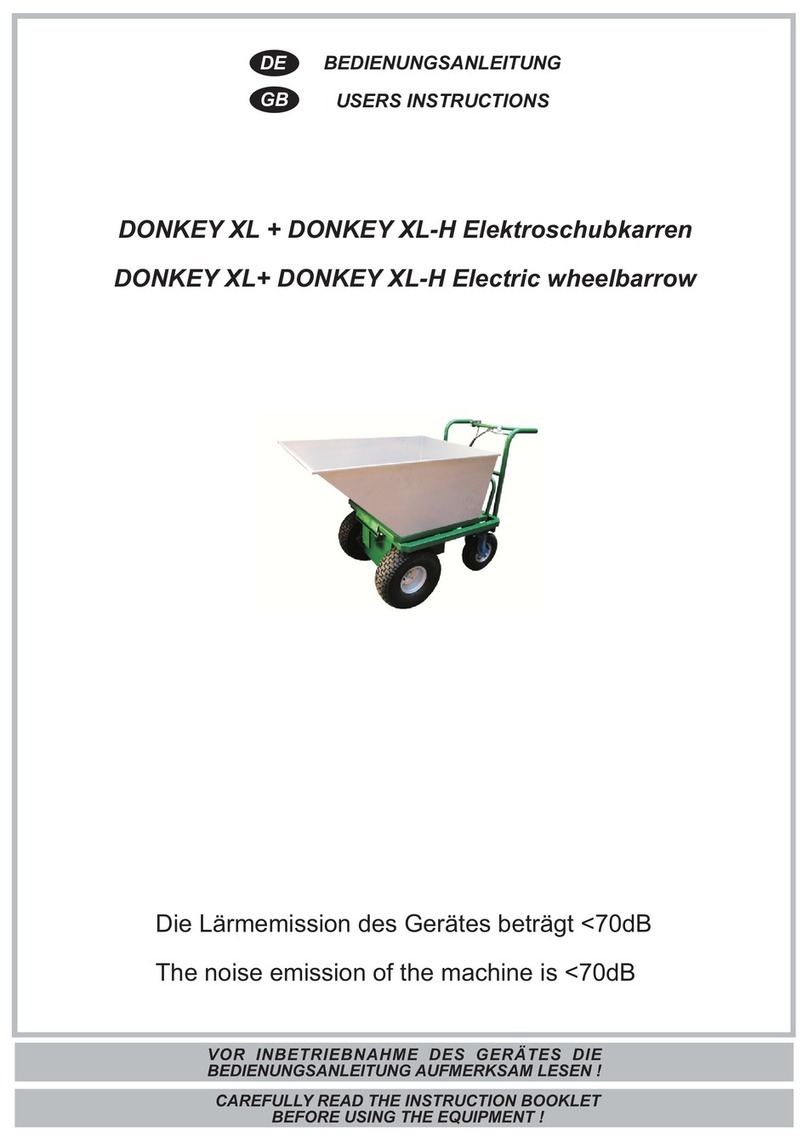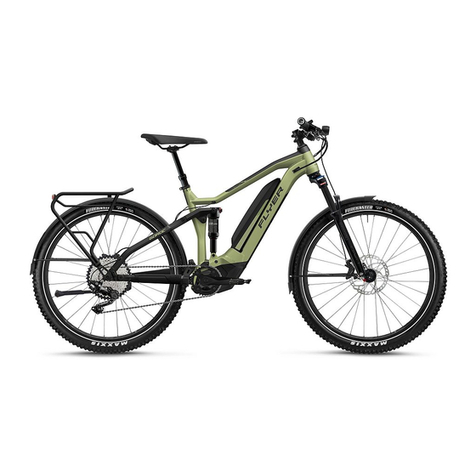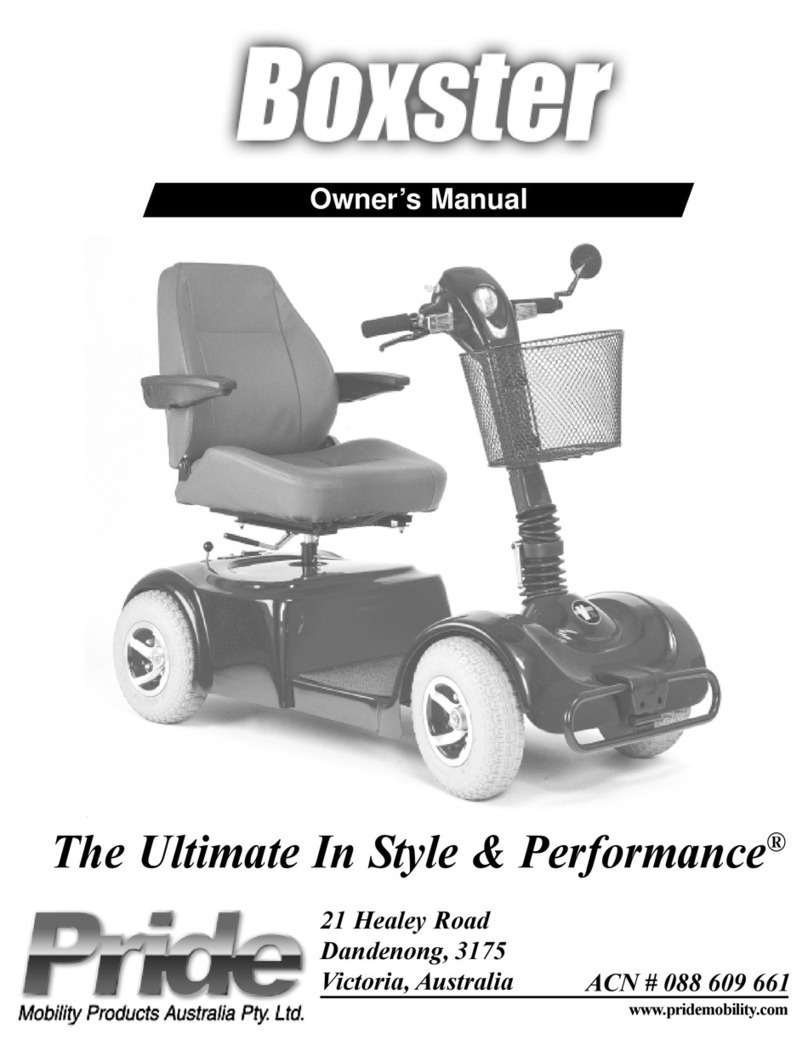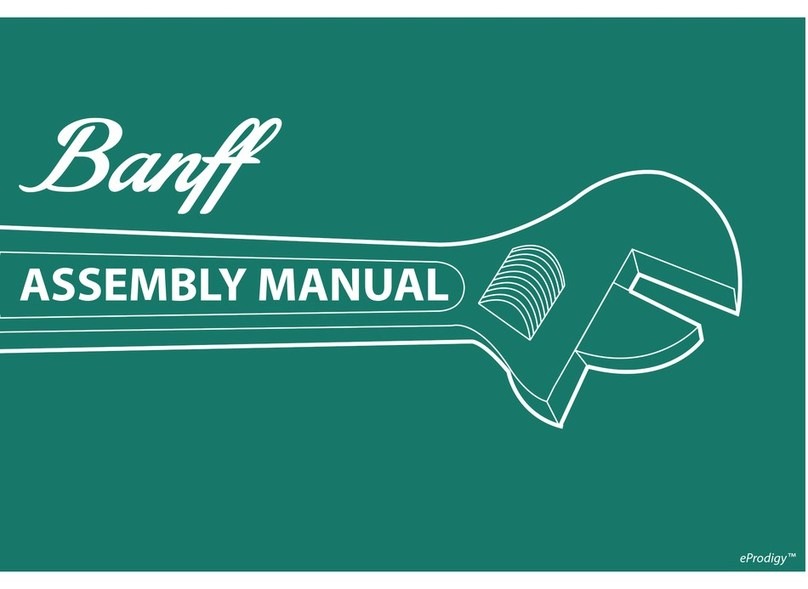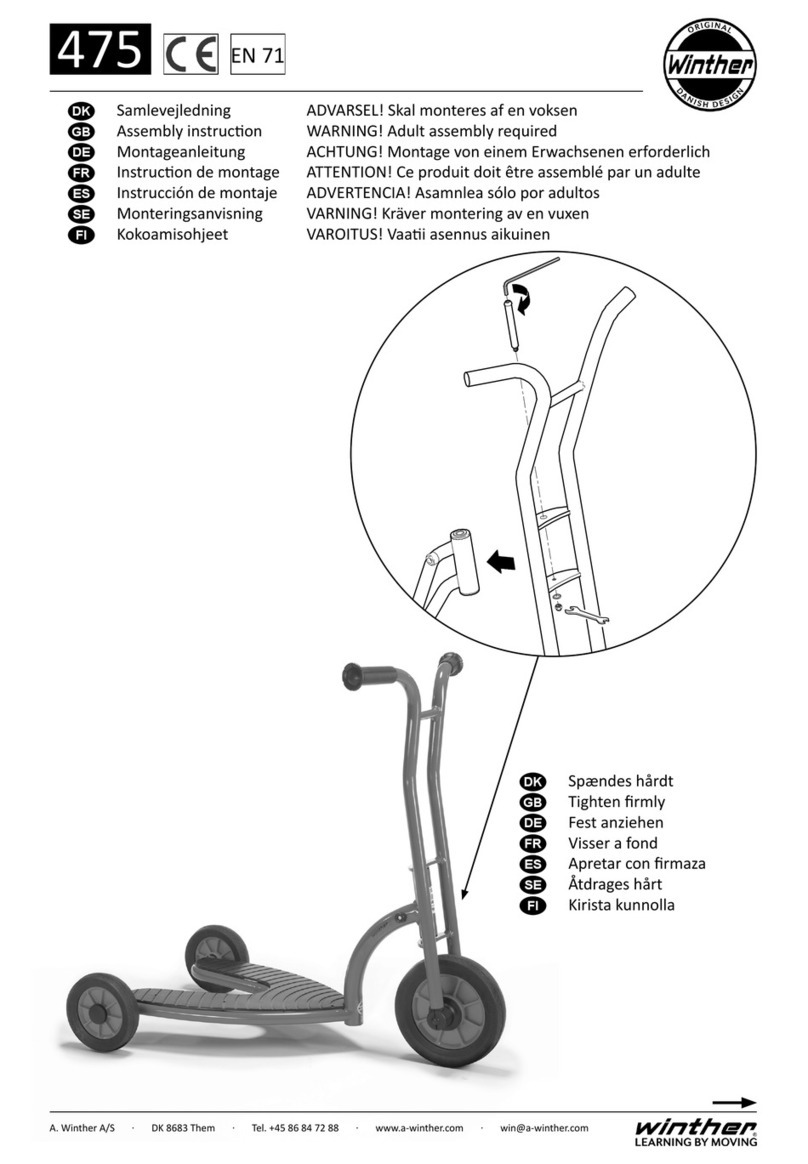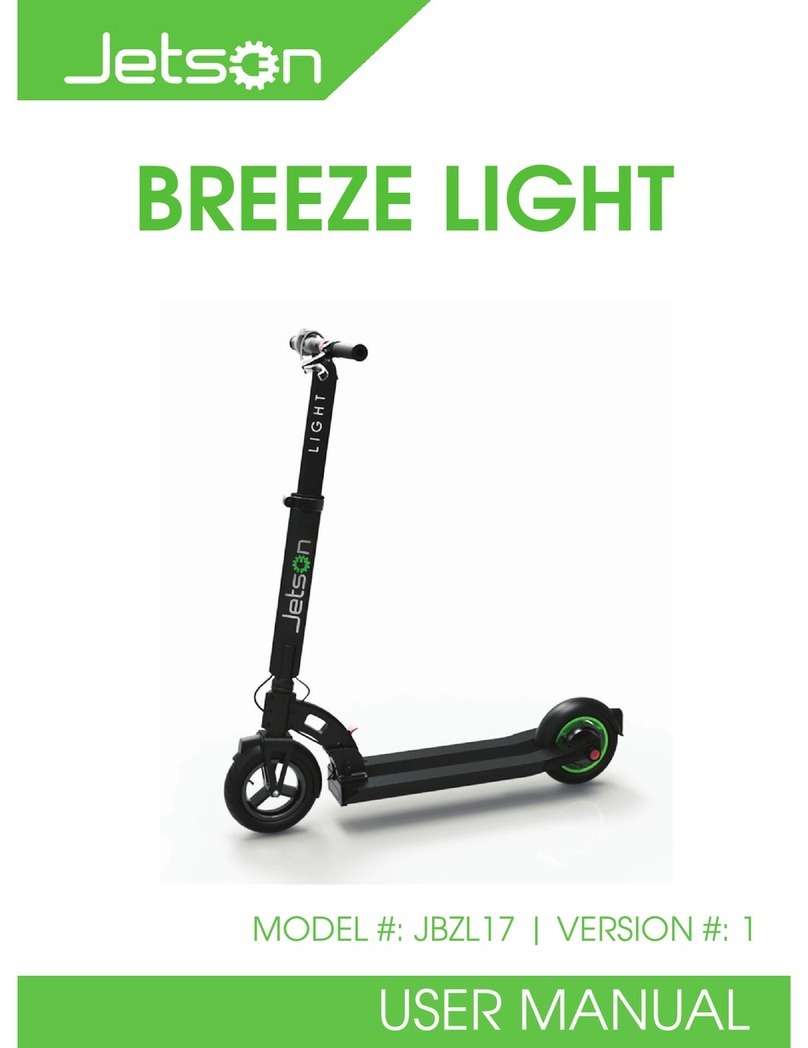WARNING: Riding the electric scooter can be a hazardous activity.
Certain conditions may cause the equipment to fail without fault of the
manufacturer. Like other electric vehicles, the scooter can and is intended
to move, and it is therefore possible to lose control, fall off and/or get into
dangerous situations that no amount of care, instruction or expertise can
eliminate. If such things occur you can be seriously injured or die, even when
using safety equipment and other precautions. RIDE AT YOUR OWN RISK
AND USE COMMON SENSE.
This manual contains many warnings and cautions concerning the
consequences of failing to maintain, inspect or properly use your electric
scooter. Because any incident can result in serious injury or even death, we
do not repeat the warning of possible serious injury or death each time such
a possibility is mentioned.
APPROPRIATE RIDER USE AND
PARENTAL SUPERVISION
This manual contains important safety information. It is your responsibility
to review this information and make sure that all riders understand all
warnings, cautions, instructions and safety topics and assure that young
riders are able to safely and responsibly use this product. Razor recommends
that you periodically review and reinforce the information in this manual
with younger riders, and that you inspect and maintain your children’s
vehicle to insure their safety.
The recommended rider age is 8 and older. Any rider unable to fit
comfortably on the scooter should not attempt to ride it. A parent’s decision
to allow his or her child to ride this product should be based on the child’s
maturity, skill and ability to follow rules.
Keep this product away from small children and remember that it is
intended for use only by persons who are, at a minimum, completely
comfortable and competent while operating the scooter.
DO NOT EXCEED THE WEIGHT LIMIT OF 120 pounds (54kg). Rider weight
does not necessarily mean a person’s size is appropriate to fit or maintain
control of the scooter.
Do not touch the brakes or motor on your scooter when in use as these parts
can become very hot.
Refer to the section on safety for additional warnings.
ACCEPTABLE RIDING PRACTICES AND
CONDITIONS
Always check and obey any local laws or regulations which may
affect the locations where the electric scooter may be used.
Ride defensively. Watch out for potential obstacles that could catch your
wheel or force you to swerve suddenly or lose control. Be careful to avoid
pedestrians, skaters, skateboards, scooters, bikes, children or animals who
may enter your path, and respect the rights and property of others.
Do not activate the speed control on the hand grip unless you are on the
scooter and in a safe, outdoor environment suitable for riding. The electric
scooter must be moving at 3 miles per hour before the motor will
engage.
Do not attempt or do stunts or tricks on your electric scooter. The scooter is
not made to withstand abuse from misuse such as jumping, curb grinding or
any other type of stunts.
Maintain a hold on the handlebars at all times.
Never allow more than one person at a time to ride the scooter.
Never use near steps or swimming pools.
Keep your fingers and other body parts away from the chain, steering system,
wheels and all other moving components.
Never use headphones or a cell phone when riding.
Never hitch a ride with another vehicle.
Do not ride your scooter in wet or icy weather and never immerse the scooter
in water, as the electrical and drive components could be damaged by water
or create other possibly unsafe conditions.
The electric scooter is intended for use on flat, dry surfaces such as
pavement or level ground without loose debris such as sand, leaves, rocks or
gravel. Wet, slick, bumpy, uneven or rough surfaces may impair traction and
contribute to possible accidents. Do not ride your scooter in mud, ice, puddles
or water. Avoid excessive speeds that can be associated with downhill rides.
Never risk damaging surfaces such as carpet or flooring by use of an electric
scooter indoors.
Do not ride at night or when visibility is limited.
PROPER RIDING ATTIRE
Always wear proper protective equipment such as an approved safety helmet
(with chin strap securely buckled), elbow pads and kneepads. A helmet may
be legally required by local law or regulation in your area. A long-sleeved
shirt, long pants, and gloves are recommended. Always wear athletic shoes
(lace-up shoes with rubber soles), never ride barefooted or in sandals, and
keep shoelaces tied and out of the way of the wheels, motor and drive
system.
USING THE CHARGER
The charger supplied with the electric scooter should be regularly examined
for damage to the cord, plug, enclosure and other parts, and in the event of
such damage, the scooter must not be charged until the charger has been
repaired or replaced.
Use only with the recommended charger.
Use caution when charging.
The charger is not a toy. Charger should be operated by an adult.
Do not operate charger near flammable materials.
Unplug charger and disconnect from scooter when not in use.
Do not exceed charging time.
Always disconnect from the charger prior to wiping down and cleaning your
scooter with liquid.
FAILURE TO USE COMMON SENSE AND HEED THE ABOVE
WARNINGS INCREASES RISK OF SERIOUS INJURY. USE WITH
APPROPRIATE CAUTION AND SERIOUS ATTENTION TO SAFE
OPERATION.
SAFETY WARNINGS
Safety Warnings ............................................................ 1
Before You Begin........................................................... 2
Assembly and Set-Up.................................................... 3
Hardware Maintenance ................................................. 4
1
Repair and Maintenance............................................. 4-7
Troubleshooting Guide................................................ 8-9
Electric Scooter Parts .................................................. 10
Warranty...................................................................... 12
CONTENTS

